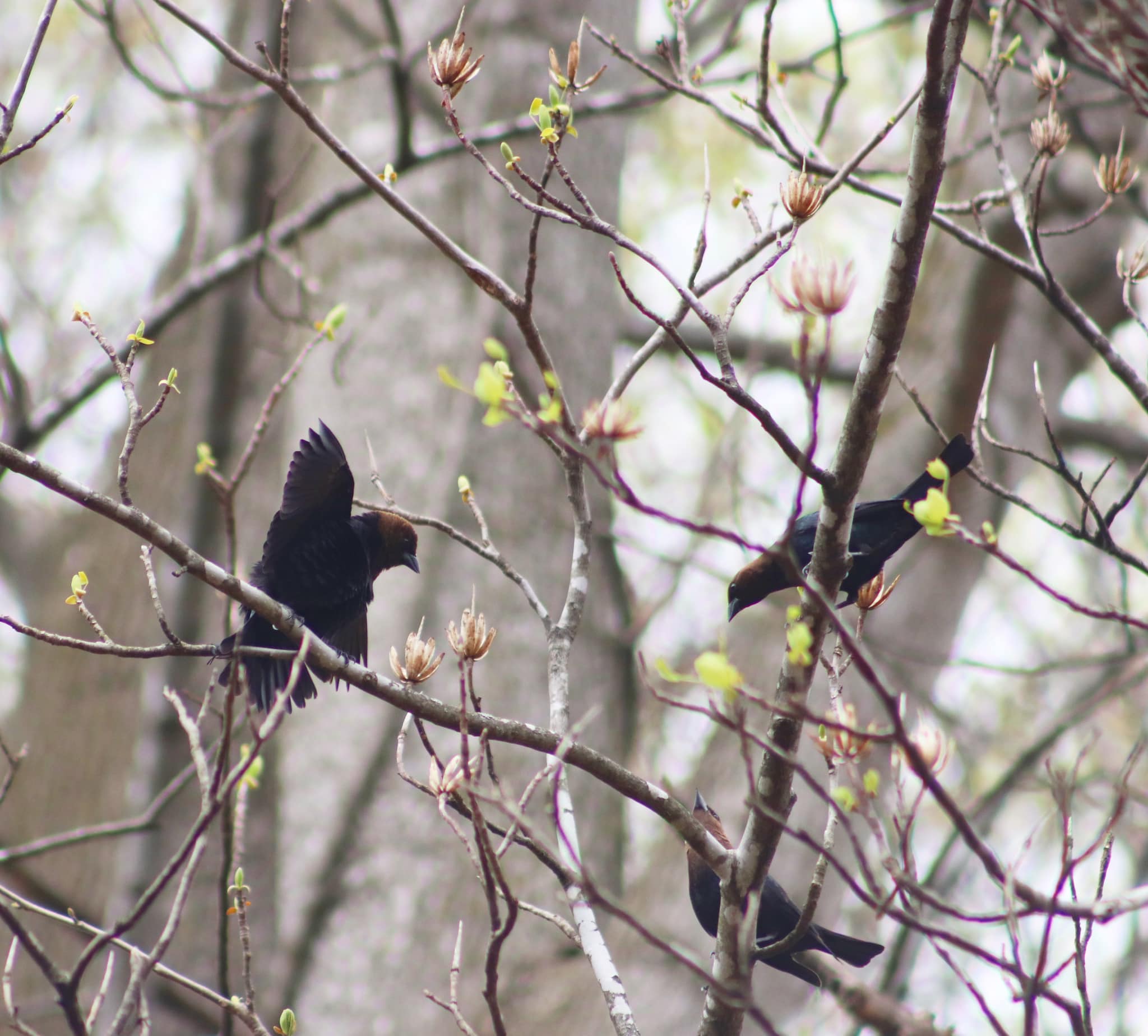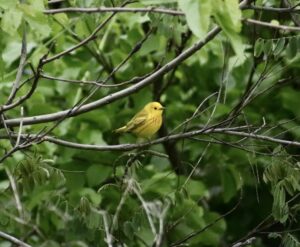by Jacob Crider
The Brown-headed Cowbird (Molothrus ater) is a common species of Blackbird with a native range expanding from central Canada down to Mexico, and can be found throughout the United States. They are encountered in many habitats but prefer grasslands, savannas, and pastureland where livestock or Bison are present. Historically, these birds co-evolved with the American Bison (Bison Bison) and fed on insects kicked up by the Bison grazing on grasses and wildflowers. They also feed on seeds along with insects, and they feed primarily on the ground.
Due to the nomadic nature of Brown-headed Cowbirds, they evolved into a unique way of nesting. They are parasitic! These birds lay their eggs in the nests (or nest boxes) of other species of songbirds and the young cowbirds will outcompete the other birds and are not even cared for by the adult cowbirds! With the lost of native habitat in the U.S. and the increase of agricultural and cattle farms, the population of these birds has risen quickly, and the increased parasitism has had a negative effect on other songbird species, leading to endangerment in some cases.
Male birds will have a black body with a chocolate brown head, and the females will be an entirely light to medium brown. They have medium sized pointy beak for insects and seeds, and relatively short wings. Their call sounds like a water droplet or a robot-like “kerplink.”
At CMNP, you can find these “Mooerbirds” year-round throughout the preserve but are most common in spring and fall near our nature center bird blind and front meadows. Like other blackbirds, they arrive in early spring in huge flocks.


